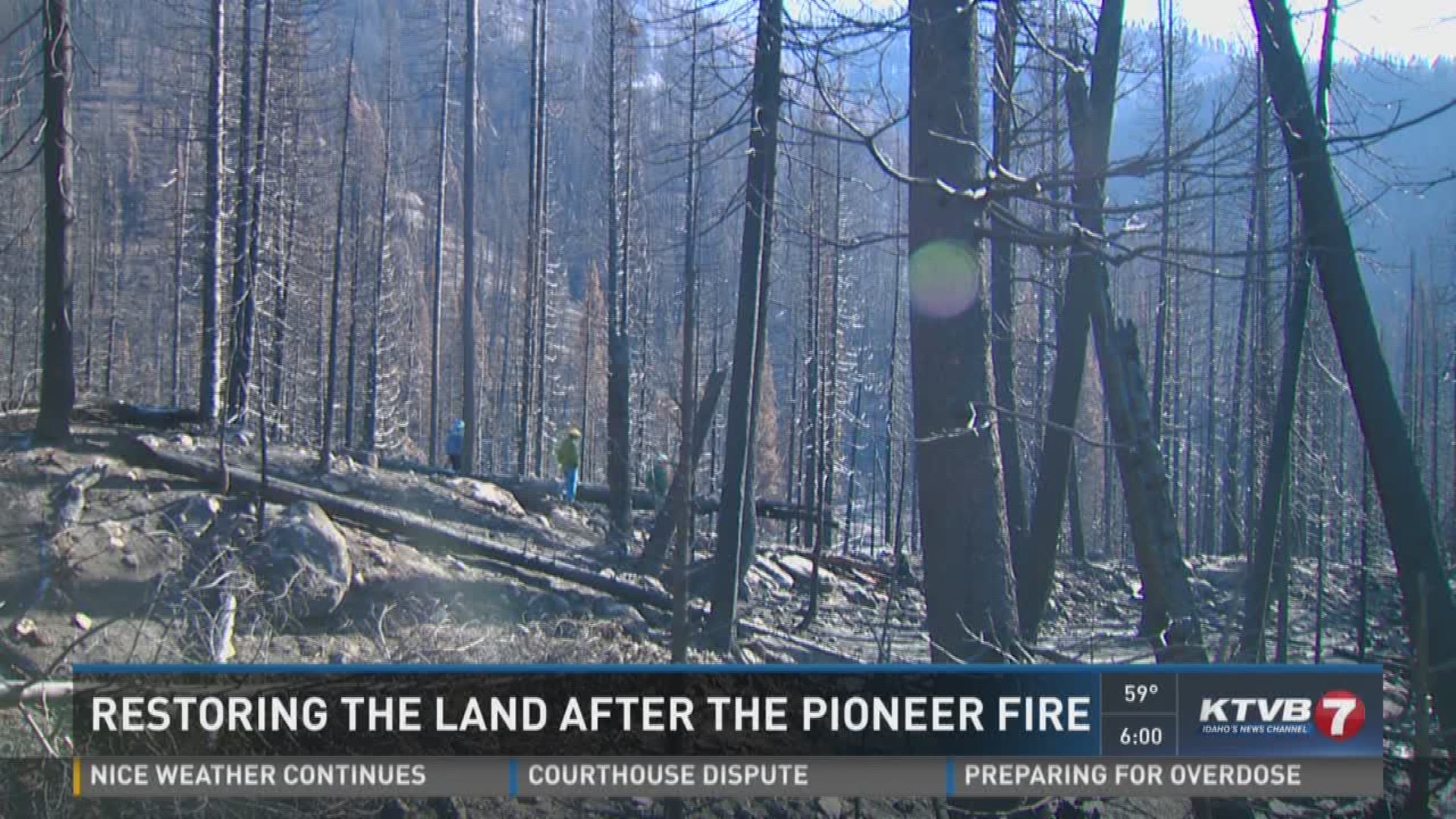After more than three months, the Pioneer Fire is now 100% contained. The fire scorched nearly 190,000 acres of the Boise National Forest. Crews are now working to restore that land.
"Forty percent burned at moderate and high severity. What that means is there's a high increase in potential for flooding and debris flows," said Terry Hardy, the Boise National Forest BAER Coordinator.
The Burned Area Emergency Response Team, BAER, is working to prevent those catastrophic events. The team has already started using helicopters to spread mulch and straw to preserve the soil in the burn scar.
"When the fire burns and we have a loss of canopy from the trees and the loss of the ground cover what that does is we have nothing to protect the ground from rain splash impact, which is initiating soil erosion," Hardy said. "From that aspect we're trying to implement treatments to replace that ground cover to that attenuation of that rain fall to help it slow the rate of flow down the hill slope."
It's all in an effort to help protect the public who uses the land.
"We'll do hazard tree mitigation around campgrounds, parking areas, places where people are stationary and at a higher risk of being hit by snags," Hardy said.
Forest officials are also rebuilding culverts to protect critical bull trout habitat.
"Within the Clear Creek Drainage, 60% of this drainage burned at moderate to high severity which is a high impact to the fish habitat," Hardy said.
Areas of Rock Creek and Clear Creak are closed because of the fire. The Payette River is also closed for recreational use as there has already been several landslides in uninhabited areas of the burn scar.
"It's greater than a 50% probability that debris flow and flooding will occur," Hardy said.
Boise County Emergency Management is already preparing for the worst.
"We've created plans primarily for evacuation and sheltering and what happens if critical infrastructure like the highway washes out and how do we get food to communities, and things like that," said John Roberts, Boise County Emergency Manager.
Plans the county is set to have in place for the next several years.
"We don't see that as being just this winter. We know that's going to be a three- or four- or five-year concern," Roberts said.
The BAER team will do as much as they can before they get snowed out. Whatever they don't finish they plan to come back in the spring.

